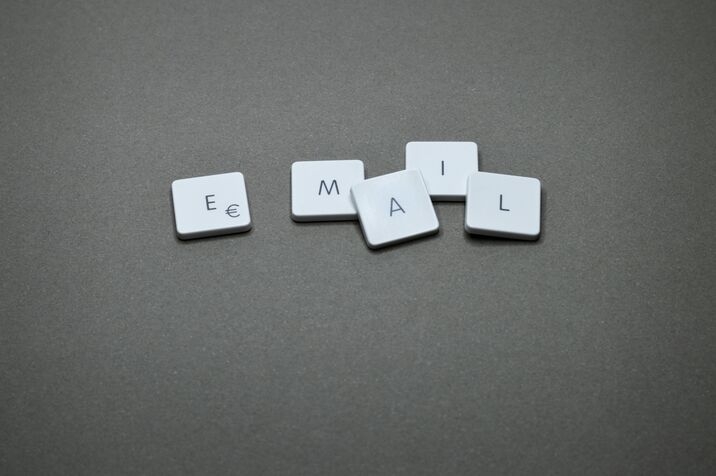
According to HubSpot, 34% of email subscribers unsubscribe due to high email frequency.
It’s a staggering statistic highlighting the importance of effective strategies to reduce email unsubscribe rates.
An email unsubscribe rate is the percentage of users who opted out of receiving a sender’s email.
A high unsubscribe rate is discouraging for businesses as it decreases brand reach, engagement, and return on investment (ROI).
Many business owners and email marketers focus on optimizing the subject lines of their emails to reduce the unsubscribe rate. However, poorly timed or irrelevant email content can still drive subscribers away even if your emails are opened.
What can you do to reduce email unsubscribe rates?
Start by understanding why you have a high unsubscribe rate. If you are in preventive mode, you need to understand the causes of a high unsubscribe rate.
RELATED POSTS:
- 7 BEST PRACTICES FOR USING IMAGES IN EMAIL CAMPAIGNS – MAILDRIP
- 5 ESSENTIAL EMAIL CUSTOMIZATION TIPS FOR ENTREPRENEURS IN 2025
- 19 POWERFUL WELCOME EMAIL EXAMPLES TO IMPROVE CUSTOMER LOYALTY
- 7 KEY EMAIL MARKETING METRICS TO TRACK IN 2025 – MAILDRIP
What might be the cause of a high unsubscribe rate?
Knowing why subscribers opt out of your newsletter is one step closer to successful email marketing for any business owner.
Subscribers can opt out of your emails if the content is not interesting or relevant enough for them. It is hard to tailor the content of your emails to individual preferences; however, there are generic preferences that will suit your target audience, and you want to lean toward those.
Also, sending too many emails to your audience—from daily motivation to promotional and discount offers—might result in a high unsubscribe rate, which can be a major turn-off for subscribers.
Personalization is also another major cause of the high unsubscribe rate. Sending emails that seem like broadcast messages is not a good way to retain subscribers. Email personalization is a major key to email marketing.
To fully understand why your subscribers opt out, you can always create an unsubscribe survey to ask them.
What is the formula for email unsubscribe rate?
To calculate the email unsubscribe rate for your brand’s campaign, use the following formula:
Email Unsubscribe Rate = N/M multiplied by 100
Where:
- N is the number of subscribers who have opted out (unsubscribers)
- M = number of email messages delivered
Imagine sending out 1000 emails, and 220 of your recipients were unsubscribed. The unsubscribe rate is 220/1000 x 100, which is 22%.
Top strategies to reduce email unsubscribe rates
Here are some of the best ways to reduce your email unsubscribe rate:
1. Write useful and relevant email content
When your emails are irrelevant to the subscribers, your unsubscribers may unsubscribe or report you as spam.
So, how do you ensure you consistently create useful and relevant email content?
To strategically create useful and relevant content for your audience, you need to understand their needs. What kind of content would be the most relevant to your target audience?
Some businesses or brands would include a questionnaire before you join their newsletter. This questionnaire provides a list of content a subscriber will be interested in.
This is an excellent strategy for segmenting their audience and ensuring that each subscriber receives the email they signed up for.
When you understand your audience’s needs, you can consistently create email content tailored to meet those needs.
Once in a while, you can send out a survey email to ask your subscribers about the relevance of the mail they are getting. This will give you accurate data and show your subscribers that you think of them.
2. Offer subscribers’ discounts and incentives
Offering discounts and incentives is a great way to make your subscribers feel valued and appreciated, which can reduce the likelihood of them unsubscribing from your email list.
There are specific ways to use discounts and incentives effectively. For example, you can offer exclusive deals to your subscribers that are unavailable to the general public, such as sending out an email with a 15% discount code for subscribers only.
You can also give them early access to sales. For example, “Our Black Friday sales start tomorrow, but as a valued subscriber, you get to shop TODAY!”
Whatever you decide, the key is to make your subscribers feel that they are part of an exclusive part of your business and that they’re getting something special primarily because they are part of your email list.
3. Create and stick to the right email frequency
Your email frequency is determined by the day, time, and number of times you send emails.
According to research by WordStream, midweek is the best time to send emails, usually in the morning.
However, this data is based solely on the user and their device.

Take Your Emails to the Next Level
MailDrip helps you automate your outreach, nurture leads, and grow your brand with ease. Send the right message at the right time—without the stress.
Sign Up FreeNo Card Required
The right email frequency will depend on your audience. To nail this right, A/B test your send time to determine what day and time have the best open rates.
As mentioned earlier, sending too many emails can be a valid reason for subscribers to unsubscribe from your list. To mitigate this, you can give your subscribers control over how often they receive your emails.
This can be done during sign-up or in your email preferences center. This way, your subscribers can choose between daily, weekly, or monthly updates, which can help you reduce unsubscribe rates based on email frequency.
You should also constantly monitor your results, especially when you change your email strategy. The results will help you determine whether to reduce the frequency of your emails.

4. Write compelling subject lines
The subject line of your email is the first set of words subscribers see when your email is delivered, so you should critically invest in the right subject line.
When you write a confusing subject line, there is a higher probability that the recipient will either unsubscribe or list it as spam.
While a compelling subject line does not directly impact your unsubscribe rate, it can significantly affect a subscriber’s decision.
Suppose you have great email content and compelling offers for your subscribers, but your subject lines are not optimized. This affects your email open rates, and the subscriber doesn’t get to see your content and offers, which can prompt them to unsubscribe.
However, with great subject lines, they open your emails, read your content, and take you up on some offers, and with these, you have increased the chances of them remaining as subscribers.
Email subject line tips:
- Keep it brief; 6-10 words is okay.
- The most valuable information that captivates attention should be at the beginning of the subject line.
- Avoid long and unnecessary phrases.
- Write using strong verbs that command action and what the recipient will gain. Action verbs like “discover,” “unlock,” etc.
5. Personalize your emails
Email personalization is one of the most effective, not-so-secret email marketing strategies and works for almost any marketing dilemma.
Different elements must be considered when personalizing emails, ranging from the literal use of names to sending tailored content.
Addressing your subscribers by name will make them feel like you’re speaking directly to them. You can leverage behavioral data to send personalized emails, like abandoned cart emails, and make product recommendations based on the subscriber’s data, e.g., browsing history or past purchases.
Birthday discounts are also a great way to show personalization. To make your subscribers feel special, you can send personalized birthday messages with a small discount or gift.
However, this might only apply to some businesses, and it will depend on the information collected during acquisition.
6. Segment your email list
Narrowing down your list into groups with similarities will help reduce your email unsubscribe rate.
You can segment your email list based on the user’s location, gender, area of interest, etc. This segmentation allows you to send targeted and user-relevant emails that hit the subscriber’s interest spot-on.
According to Klaviyo, segmenting your audience and sending targeted email campaigns can reduce your email unsubscribe rate by as high as 50% while increasing the return on investments by up to 3x!
However, the parameters you will use to group your list will depend on your industry and the campaign’s goals.
7. Follow up and ask for the subscriber’s feedback
Your subscribers may have something they want to share with you; it may be positive or negative feedback.
You can conduct feedback surveys at targeted times. For example, if you notice a spike in your email unsubscribe rate, you should run a survey to check in with your subscribers.
You can also request feedback when a subscriber opts out of your email list to understand their ‘why.’
Using an email automation tool, you can set up follow-up emails and feedback surveys.
MailDrip is a good automation software to try. The MailDrip premium plans are the best for everything automation-related.
8. Optimize your emails for all device types
Optimizing your emails is crucial if you want to reduce unsubscribe rates.
When the important sections of an email are not displayed entirely on a subscriber’s device, they will most likely unsubscribe because they might view the message as potential spam.
Your email may be opened by mobile or desktop users, and to reduce unsubscribe rates, you should ensure that the mail is displayed correctly on both mobile and desktop views.
Display features like fonts, CTA links, images, and navigation should be visible and responsive on all device types.

Conclusion
Now that you understand the top strategies for reducing email unsubscribe rates, you can begin optimizing the different aspects of your email marketing strategy and stay ahead of the curve.
Subscribe to our newsletter for the latest email marketing tips and trends.
READ MORE: HOW TO EFFECTIVELY USE STORYTELLING IN EMAIL MARKETING

